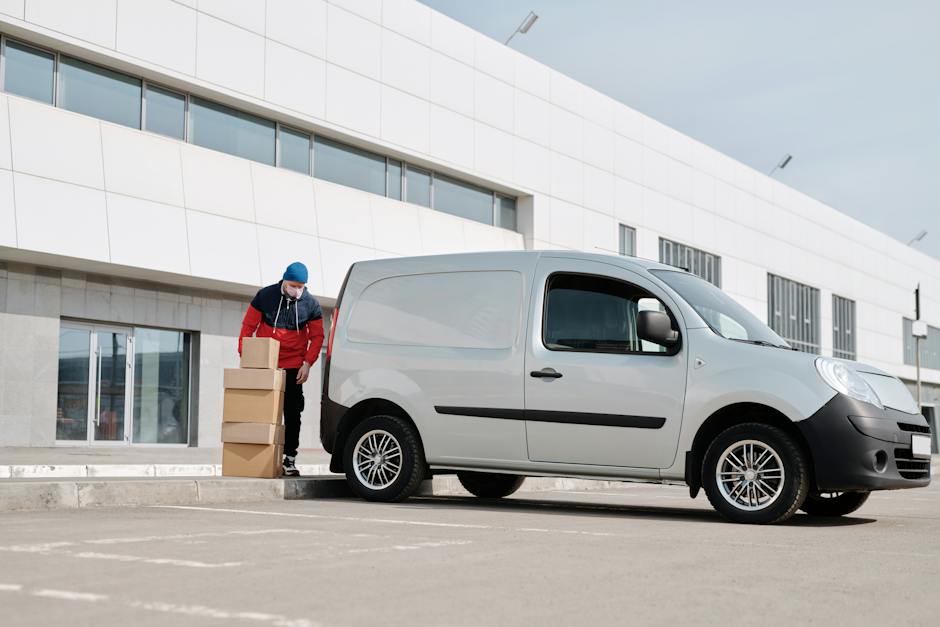As we delve into the complex world of moving companies, understanding the cost and pricing structure forms the first foundation stone. It’s essential to comprehend how these firms derive their pricing model based on multiple factors such as the distance covered, amount of goods, and additional services. Alongside, understanding the role of variable and fixed costs in their operations is vital. Quality assurance and reliability offer another crucial dimension to this industry. Given the inherent unpredictability and operational risks involved, top-tier moving companies strive to assure customer satisfaction through rigorous policies, certifications, and quality metrics. And then, taking a step forward into the future, we delve into the innovations and trends. The immense impact of digital transformation, AI, and other technological enhancements on service delivery and cost optimization cannot be understated. This future-focused perspective offers insights into how the domino of moving companies is shaped.
Cost and Pricing Structure of Moving Companies
The Economy of Relocation: Unraveling the Cost Structure of Moving Companies
Shifting locations, whether commercial or residential, can be an exciting but equally daunting procedure. A lion’s share of the stress originates from the financial burden that is the moving expense – an expense contingent on an array of factors. Decoding the cost structure of moving companies and understanding how pricing is defined can lead to fiscal savings while ensuring a smooth move.
First and foremost, it is cardinal to underscore that each moving scenario is unique. Consequently, the cost structure fluctuates based on the individual requirements of each move. That said, let’s delve into the significant components that impinge on the pricing mechanism of moving companies.
- Distance: Measured in mileage covered, distance is the most palpable cost determinant. Relocating within a city differs vastly from moving across states. This factor is broadly categorized under local and long-distance moves, each having a different pricing structure. Local moves usually charge per hour, while long-distance ones have a flat rate, largely dependent on the mileage and weight of the shipment.
- Weight and Volume of Items: The physical properties of the items being moved play an integral part in dictating the cost. The more the belongings’ space occupancy and weight, the more resources the moving company will need to allocate, increasing the overall price.
- Time and Seasonality: The timing of the move can also fluctuate the cost radically. Peak moving times like weekends, holidays, and summer, when demand is high, prices surge. Moving off-peak, on weekday mornings or winter, can cut expenses significantly.
- Additional Services: Reputable moving companies offer a slew of specialized services including packing, unpacking, disassembling and reassembling of furniture, and providing packing materials. All these represent an additional cost that will augment the total bill.
- Insurance: Basic liability coverage comes included in any move cost. However, opting for full-value protection, where the moving company reimburses the replacement cost of any damaged or lost item, bumps up the price.
- Accessibility: Finally, be prepared for possible additional costs due to poor accessibility. Narrow stairways, lack of elevators, a long distance from home to the moving vehicle, or parking inconveniences can pose challenges that often translate into higher costs.
The pricing mechanism in the moving industry is complex but by no means mysterious. Understanding the influencing variables can proffer a major bargaining chip when negotiating a quote. Henceforth, before signing on the dotted line with a moving company, be sure to familiarize yourself with these decisive elements, allowing for a smart and cost-effective move.

Quality Assurance and Reliability
Delivering Exceptional Quality and Service: The Success Factors Behind Moving Companies
Whether relocating across state lines or moving within the same city, the choice of a moving company greatly influences the overall experience. Selecting a reputable moving company can be the difference between a seamless transition and a moving nightmare.
To make this decision easier for clients, reliable movers have implemented certain strategies, tactically employing effective methodologies to secure service quality and reliability. Here’s how:
- Staff Training and Competency
- Technology Adoption
- Customer-Centric Approach
- Transparency and Open Communication
- Quality Control Checks
- Accreditations and Affiliations
For moving companies, the foundation of service reliability lies in their staff. Robust training programs ensure that employees have the knowledge and skill to handle every aspect of the job, from packing fragile items to maneuvering heavy furniture. In addition, regular skill-enhancement workshops and insider tips from industry veterans prepare the team for any unexpected scenarios, thereby increasing overall efficiency.
Automation and technology play a critical role in maintaining service quality. Reliable movers incorporate advanced software for estimating costs, managing inventory, and tracking shipments in real-time. Additionally, the striding advancement in technologies like AI, IoT, and blockchain catalyze transparency, enhance data security, and improve the efficiency of logistics operations.
To truly stand out among competitors, companies make their services as customer-centric as possible. They understand that a successful move hinges on attention to detail and personalization. This approach can be seen in flexible scheduling, offering various packing options to cater to unique needs, or providing temporary storage solutions.
Reputable moving companies value transparency because they know trust is the heart of any business transaction. Complete honesty regarding pricing structures, potential delays, or any hiccups during the move help foster an environment of trust. Open communication channels also allow for prompt issue resolution and improves customers’ involvement in the process, assuring them that their possessions are in safe hands.
Regularly occurring quality checks and audits are a common practice among trusted moving companies. These could include performance reviews of employees, revising operational processes, inspecting materials used for packaging, and evaluating customer feedback. This ongoing process allows companies to perpetually improve and maintain high service standards.
Lastly, leading moving companies often have licenses, accreditations, or affiliations with professional moving associations. These recognitions serve as proof of the company’s commitment to industry best practices and assure customers of their reliability.
In the end, a reputable moving company’s mantra for success can be condensed to its persistent focus on service quality and reliability. Understanding and meeting customer needs, staying abreast with technology trends, maintaining transparency, and continuously improving their services set them apart in this competitive industry. Consequently, these adherence and methodologies provide consumers with a proficient, smooth, and stress-free moving experience.

Innovation and Future Trends in the Moving Industry
Amplifying the Moving Industry: A Look Into Intriguing Trends & Innovations
In today’s world of increasingly growing innovation and trends, the moving industry is no different. It is experiencing a transformation shaped by exciting trends and innovative strategies.
As with many industries, the advent of the digital age has had a profound impact on the moving industry. The integration of advanced technologies such as AI and IoT (Internet of Things) is revolutionizing the way companies provide moving services. AI-enabled solutions are streamlining processes, enriching customer service, and improving efficiency. For instance, the use of AI in inventory estimation helps in giving accurate quotes to the customers, thereby enhancing transparency.
Next in line is the IoT technology, which promotes remote tracking and monitoring of shipments. This technology assists in efficient route planning, real-time tracking of a shipment, predicting and avoiding possible delays, and ensuring security. Furthermore, companies also leverage Virtual Reality (VR) to provide virtual home surveys offering the customers an accurate estimate without a physical walkthrough of the premises.
Sustainability is yet another trend that’s transforming the moving industry. Implementation of eco-friendly practices is now being witnessed across many moving companies. They are making conscious efforts to reduce carbon footprints. From fuel-efficient vehicles to recyclable packing materials and digitization of processes, each step is taken with careful consideration of its impact on the environment.
Considering the unpredictable nature of global events like pandemics, the moving industry is shifting towards adaptable and resilient business models. One such adaptation includes contactless moving options to ensure safety. Self-service options enabled by digital technologies reduce face-to-face interaction without compromising the quality of service.
The essence of innovation cannot be discussed without considering on-demand moving services. Emergence of on-demand movers is reshaping the industry, providing customers the flexibility of scheduling their moves according to their convenience. Similarly, the rise of online platforms and moving apps simplifies the moving process while promoting convenience.
Moreover, strategic collaborations and partnerships are evolving as decisive trends shaping this industry. Reputed moving companies are partnering with other business entities such as real estate agencies, storage providers, and home services providers to offer comprehensive packages to customers, making their move a seamless process.
To wrap it up, innovation and adaptability are key players in the future growth and success of the moving industry. As novel trends continue to reshape the industry landscape, one thing is for sure – strict adherence to traditional ways won’t cut it. An open mindset to embrace and implement these changes will be the way forward. Stay fluid, move with the flow and transition with the times – that’s the mantra for the modern-era moving industry.

Having parsed through the intricacies of the moving industry, the understanding so gained about the cost and pricing structure informs us how moving companies price their services. The recognition of quality assurance and reliability metrics equips us with a yardstick to measure services while choosing a moving company. Intricacies behind operational risks and mitigation strategies further enrich this understanding. Lastly, the exploration of future trends and technological innovations provides us a glimpse into the future landscape of the industry. These insights reveal the adaptability needed from moving companies to evolve and thrive in an ever-changing domain, ultimately enabling us to make more informed decisions when choosing a moving service.

